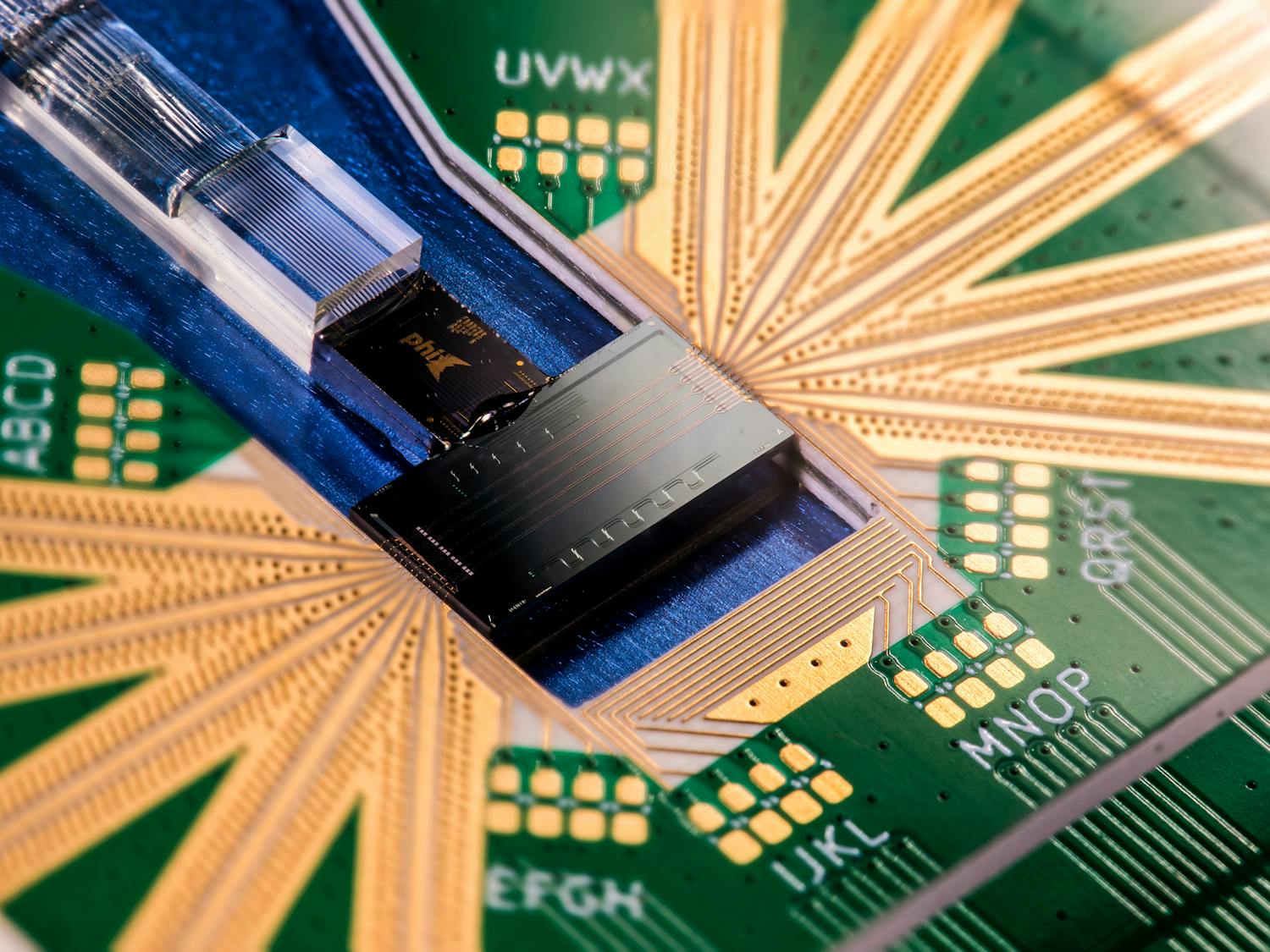Looking for thin-film lithium niobate (TFLN) photonic integrated circuit (PIC) foundry service?
Contact us today if you would like to learn more. Or refer to our expertise in Photonics for more information on how we could help you.

In today’s hyper-connected world, data centers are the foundation of industries such as telecommunications, cloud computing, and e-commerce. The explosion of technologies such as 5G networks, artificial intelligence (AI), and the Internet of Things (IoT) has led to corresponding growth in data traffic. This surge in demand places immense pressure on traditional data transmission systems, which struggle to keep up.
CSEM has introduced Thin-Film Lithium Niobate (TFLN) modulators on a standardized platform to revolutionize data transmission. This innovative technology promises faster, more efficient, and sustainable data transfer. Market analysts predict that TFLN modulators will drive the development of low-power transceivers capable of transmitting over one terabyte of data per second. Compared to traditional silicon-based transceivers that typically achieve speeds of 50 to 100 gigabits per second, TFLN modulators offer superior speed and energy efficiency, making them a critical component in the future of global data infrastructure.
“A TFLN modulator is an optical device that encodes data onto light waves for transmission through fiber-optic networks. This technology uses the unique electro-optic properties of lithium niobate, known for its stability, efficiency, and high-frequency handling,” says Homa Zarebidaki, Senior R&D Engineer, CSEM. “By adopting thin-film technology, CSEM has miniaturized lithium niobate modulators to a fraction of their original size. This compact design enhances performance, reduces power requirements, and facilitates seamless integration into photonic integrated circuits (PICs). The result is a device offering exceptional reliability and cost efficiency, which increases the speed of data transmission.”
CSEM’s advancements in TFLN technology are rooted in European research collaborations. One notable achievement is the LOLIPOP project, an EU-funded initiative focusing on photonic-electronic integration. Partnering with organizations such as PHIX, IMEC, and LioniX International, CSEM has delivered a module with five TFLN modulators on a Lithium Niobate on Insulator (LNOI) chip. The module achieves over 40 GHz modulation frequencies and minimal optical losses, paving the way for faster, more cost-effective telecommunications systems.
Another milestone has been achieved within the Horizon Europe SPRINTER project. One of the key achievements was the demonstration of a 10GbE Ethernet link over a 5-kilometer fiber-optic network using CSEM TFLN modulators, conducted by the project partners. The results showed very low bit error rates (meaning there were very few mistakes or errors in the data being transmitted), which indicates a highly reliable and accurate communication system. Additionally, the demonstration shows promise as an ideal solution for faster and more cost-effective telecommunications systems.
CSEM’s approach ensures its modulator manufactured on CSEM’s standardized TFLN Platform is scalable to support emerging technologies such as quantum computing and advanced AI systems. Its adaptability makes it a long-term solution for rapidly evolving data ecosystems. This is crucial given the environmental concerns associated with data infrastructure. With data centers consuming a substantial share of global energy, sustainable practices are imperative. The TFLN modulator contributes to these efforts by offering energy-efficient operation, enabling low-carbon solutions in telecommunications, and supporting eco-friendly advancements in photonic technologies.
CSEM’s TFLN modulator represents a paradigm shift in data communication. By addressing critical challenges such as standardization, speed, efficiency, and sustainability, this innovation lays the foundation for the future of global connectivity. With its robust performance and adaptability, the TFLN modulator is set to transform industries ranging from telecommunications to quantum computing.
Contact us today if you would like to learn more. Or refer to our expertise in Photonics for more information on how we could help you.